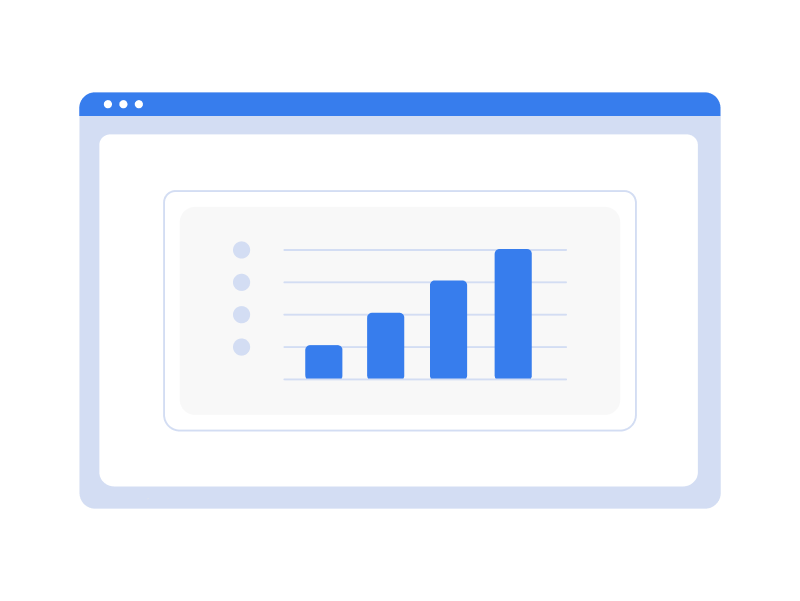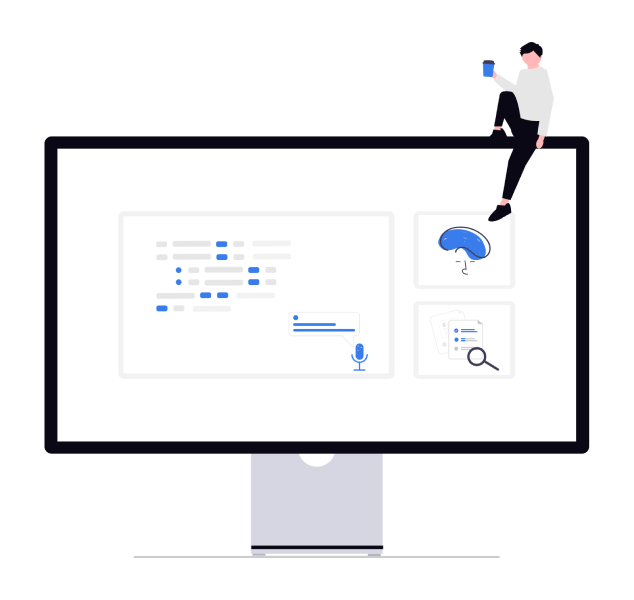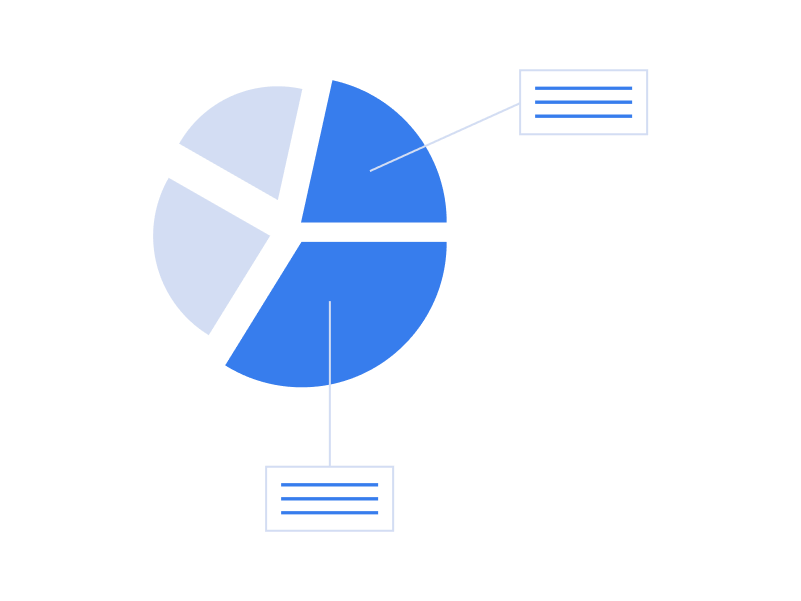If you are reading this, then it’s obvious to you that SEO isn’t dead and is not going to vanish any time soon.
In fact, SEO is still one of the most cost-effective ways of generating website traffic and generating leads.
Every year Google changes its ranking algorithm to improve user experience (and cause headaches for SEO geeks).
Today we are going to look at 8 SEO trends that you must watch out for in 2024.
Trend 1: Video content is even more worthwhile
At this point, it’s hard to consider video content a trend. After all – video content dominates in pretty much every social media platform out there.
However, the rise of TikTok and YouTube shorts shows us that people searching for information often prefer to watch a short clip as opposed to reading an article.
Thus, Google has been trying to incorporate this trend into search results. YouTube videos were already shown in SERPs before, but now video content gets two new sets of structured data:
- Seek markup – Google scans your video and identifies key moments automatically
- Clip markup – you embed timestamps that you want to appear as key moments or highlights of your video.
This new structured data makes it easier for users to identify a point in the video that they should be watching instead of skipping through the whole video.
Now, we arrive at the question -> what should you do as an SEO specialist?
First and foremost, focus on video content in your marketing strategy. Then, make use of this new markup data and apply common-sense SEO principles to rank your videos.
Note: at the time of writing this article, the new structured data only works on YouTube videos.
Trend 2: Helpful content – stronger focus on search intent
The best time to write useful content that aims to answer a question or solve a problem was yesterday. The second best time is now.
Heavily overused tactics such as keyword stuffing did not work for a while now, so let me tell you something new.
Since the recent algorithm update, Google will prioritize search intent over the exact search query.
Let’s look at this example. Think about the following queries and their intent:
- “How do Sony headphones work” – you have a basic informational intent, and you will likely see an article that explains the technical features of headphones from Sony (probably from their website).
- “What are the best Sony headphones” – your intent is research-based but not yet transactional. At the top of the search, you will likely see articles that compare a dozen of headphones, focusing on the pros and cons of each.
- “Buy Sony headphones” – you have a clear transactional intent, and Google will likely serve you e-commerce websites where you can make a purchase.
Okay, by now, you’re probably thinking – damn, that’s kind of obvious. But let me tell you that a lot of websites are trying to rank for a multitude of high-volume keywords that serve completely different audiences.
You wouldn’t expect a sales-oriented e-commerce website to be too helpful when it comes to learning the technology behind headphones, right?
Google thinks the same, and that’s why problem-solving and intent-tailored content will enjoy better rankings.
What this means in practice is: instead of writing long-form content for the sake of having a higher word count than your competitor – focus on search intent and deliver a laser-targeted copy.
Additionally, semantically related keywords are more useful than ever. So make sure to shape your content around a specific problem and use multiple keywords and phrases that relate to this problem. (Once again, this should be based on intent, not just volume)
Trend 3: Mobile optimization is still king
Before you roll your eyes and say, “look, mobile-first indexing was launched way back in 2019”, we want to stress something.
Although Google views the mobile version as your “main” website, roughly a third of all websites on the internet are barely usable on mobile devices.
The reason why we want to repeat this rather old trend here is simple – most website owners don’t seem to realize that investing in a solid mobile website can be far more beneficial than investing in a higher domain authority.
As previously, if you want to optimize your mobile website – pay close attention to your Core Web Vitals. For convenience, Google released a mobile-friendly test that shows you your page performance without diving into too many technical details.
Apart from that, we expect to see more and more mobile-focused search features every year.
For example, recently, Google introduced continuous scrolling for mobile devices (no pages anymore), and this will carry on to desktop devices sometime in the near future.
Additionally, voice search is no longer a trend but the future of search thanks to mobile devices. Thus, you should optimize for natural queries. For instance, “what are the best restaurants in Vancouver” as opposed to “best restaurants in Vancouver”.
Hence, the key lesson here: mobile devices come first and will shape the future of SEO for years to come.
Bonus tip: having a fast and responsive mobile website can go a long way. For example, getting featured in Google Discover (a mobile news feed) is virtually impossible if your website is not mobile-friendly. Given that this service is used by millions, it’s surely not a ranking opportunity that you should ignore.
Trend 4: EAT and branded SEO become even more important
Back in the day, having a “strong” domain name was a prerequisite for a successful SEO strategy.
What do we mean by “strong”?
The domain age and its previous authority were vital to rankings. Similarly, domains that had niche keywords in them used to be deemed more relevant by Google.
Needless to say, this was heavily abused by numerous black hat SEO practices such as PBN creation.
Nowadays, things are different.
The path to higher SERP ranking now lies through EAT (Expertise, Authoritativeness, Trustworthiness) of your brand and not the domain name.
Your domain still plays a role, but the brand behind the domain is way more important.
Now, there are a bunch of things that impact your brand credibility:
- Online reviews & testimonials
- Brand mentions around the internet (not just backlinks)
- Social media activity
Key takeaway: Using social listening and investing in your overall digital presence will ultimately be more rewarding than having a good domain.
Trend 5: Passage ranking – diving into the page context
Passage ranking is a new AI-based algorithm that aims to analyze page content and rank individual passages (not entire web pages) in the SERP.
This update went rather quietly, with few SEO professionals reporting any significant ups or downs.
Google themselves claims that about 7% of English searches will be affected by the update (this is still a lot of searches, but perhaps not enough to make a buzz in the SEO world).
Moreover, Google repeatedly stated that it’s an internal update and you can’t specifically optimize for it.
To keep it to the point, the award once again goes to… in-depth, long-form content.
Now that individual chunks of text can rank for a certain keyword, content that covers multiple problems or subtopics (even those that do not perfectly match the main subject) can get a nice bonus to their SERP ranking.
As stated above, there are no specific optimization hacks for passage ranking (at least yet), but here are a few rules of thumb that you can put the odds in your favor:
- Try to cover multiple subtopics within your content
- Make use of headings more often to separate different passages of content, and ensure that your headings are keyword-rich
- Integrate popular long-tail keywords within each topic-specific passage of content (more narrow keyword research, you could say)
If we have to guess, the passage ranking update didn’t come across to you as mind-blowing, and it shouldn’t.
However, Google will roll out more of these seemingly “minor” AI-driven updates in the future, and together they will likely make a significant impact on the nature of search results.
Trend 6: Zero-click searches are taking over
Let’s face a sad fact, roughly half of all Google searches do not lead to website visits.
Thanks to advancements in Google’s knowledge panel and rich schemas, a lot of search results are now displayed in the form of an answer box, Q&A toggle, or direct answer.
This is good news for users (you can get information faster) but bad news for website owners (fewer clicks to your website).
There are a few things that we want to point out:
- You should still try to Implement proper schema markup to get featured in Google’s knowledge panel. Despite the no-click nature of such informational queries, getting your name out there is still not a bad idea.
- If you have a local business, then it’s only natural that most local searches will end up in real-life store visitors or calls. Thus, website traffic might not necessarily be your #1 KPI.
- When doing keyword research, make sure that you’re not optimizing too heavily on multiple zero-click search terms. Modern tools such as SimilarWeb will show this information in their keyword reports.
For example, does it make sense to optimize for the search query “when was the Declaration of Independence signed”, if your goal is getting traffic to your webpage?
Most likely not! Although it’s a high-volume keyphrase, you can imagine that most people just want to know the year, and won’t read any further.
Instead, you could focus on keywords that won’t result in Google immediately answering the question (thereby increasing the chances someone will actually go to your website to read your content).
Note: this pattern differs a lot from niche to niche, so please do your research and trust your judgment!
Note 2: The Declaration of Independence was signed in 1776. We just eliminated the need for one zero-click search!
Trend 7: Visual search is on the rise
Although visual search has been around for a while now, many SEO experts predict that it will rise in popularity in the coming years.
This trend has been largely introduced by Pinterest, which has one of the biggest image libraries on the internet.
Yet, Google also has a lot to offer with its Google Lens app.
The potential of this technology is enormous. Not only it saves the user’s time and reduces complexity (taking a picture instead of describing an object or event in words), but offers yet another optimization opportunity for SEO geeks.
Think about it – people who make use of image searches have different intentions.
For example, you see your friend wearing a nice tuxedo and you want to purchase one for yourself – you perform a visual search and you immediately see retailers where you can buy it from.
The example above illustrates a user with a clear commercial intent, but the same logic can be applied to informational intent as well.
Okay, now that we know that visual search is promising, what should you do about it?
Actually, adhering to best practices on image optimization should be enough. Those practices include but are not limited to:
- Writing meaningful alt tags and image titles that include your target keyword (s)
- Adding captions to images (where appropriate)
- Posting unique images (not just stocks)
- Compressing images for faster load times
- Adding structured data to your visuals (where appropriate)
All in all, image SEO hasn’t drastically changed, but given the expected rise in usership of visual search, it might be a good time to pay extra attention to the practices listed above.
Trend 8: IndexNow – finally, faster and smoother page indexing
Most search engines, including Google, used to operate in the following manner:
A crawler visits your website periodically to scan for any content changes and index new pages, gathering data from your server’s end.
Needless to say, every content update can take weeks to get indexed (especially for low-traffic websites).
An alternative way would be going to the Search Console and requesting page indexation manually.
Although these requests are ought to be prioritized, there’s no guarantee or specific time frame for indexing your web pages.
And here is where IndexNow truly shines.
Not only will your CMS automatically notify search engines of any content updates, but the index request will also be pushed to all search engines that are using this protocol!
At the time of writing this article, only Bing and Yandex utilize the IndexNow protocol.
We think that it’s only a matter of time until Google adopts this protocol or introduces a comparable alternative.
After all, faster indexing benefits both consumers and website owners.
Conclusion
If you want your SEO strategy to continue to drive quality traffic to your website, it’s important to stay on top of the industry.
Hopefully, this list of 8 SEO trends of 2024 can get you up and running.
As a side note, performing a solid competitor analysis was never a trend but a foundation of SEO. And that’s where Crowdo can help, completely free of charge.








